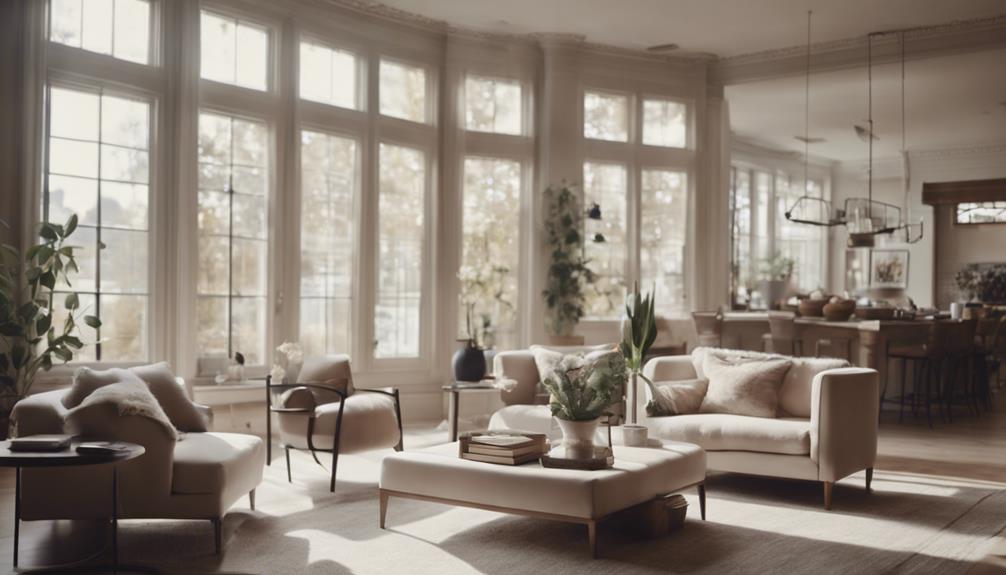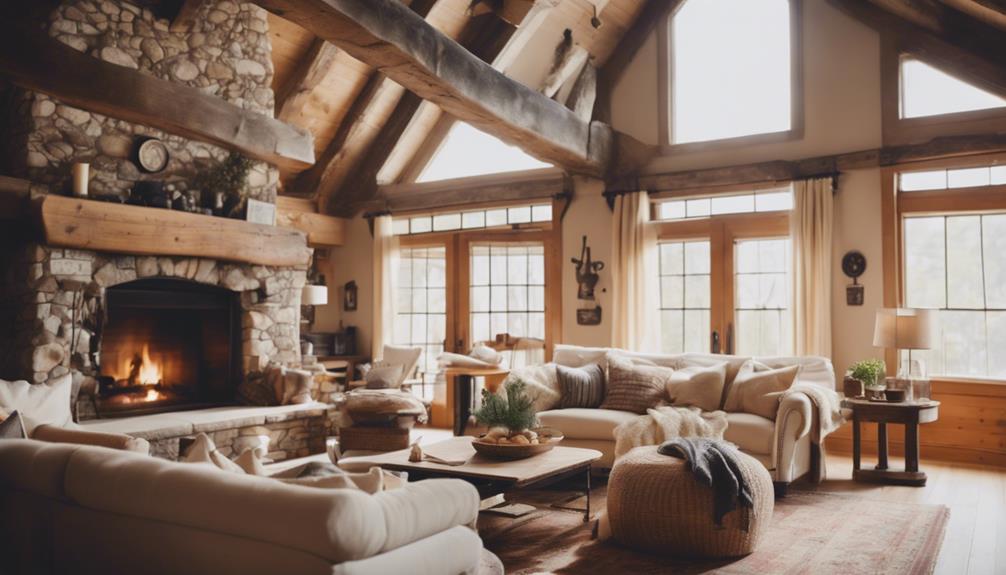Transitional design combines the appeal of traditional style with a contemporary twist, providing you the opportunity to explore your unique aesthetic. You have the flexibility to mix and match furnishings from various eras, enabling creative expression. Begin by selecting a focal point that grabs attention, and deliberately contrast it with elements from different styles. Maintain a cohesive color palette to tie your space together. Layer textures, blend materials, and let modern pieces complement classic ones for a striking equilibrium. There is plenty more to discover that can assist you in bringing your vision to fruition.
Key Takeaways
- Transitional design combines traditional and contemporary styles, allowing for creative mixing of furnishing choices without strict adherence to one era.
- Establish a focal point in your space to create visual interest and set the overall tone of the design.
- Utilize a cohesive color scheme to enhance harmony while integrating various styles and elements in your decor.
- Pair modern items with traditional decor to create a striking balance and enhance visual intrigue in your living space.
Characteristics of Transitional Design
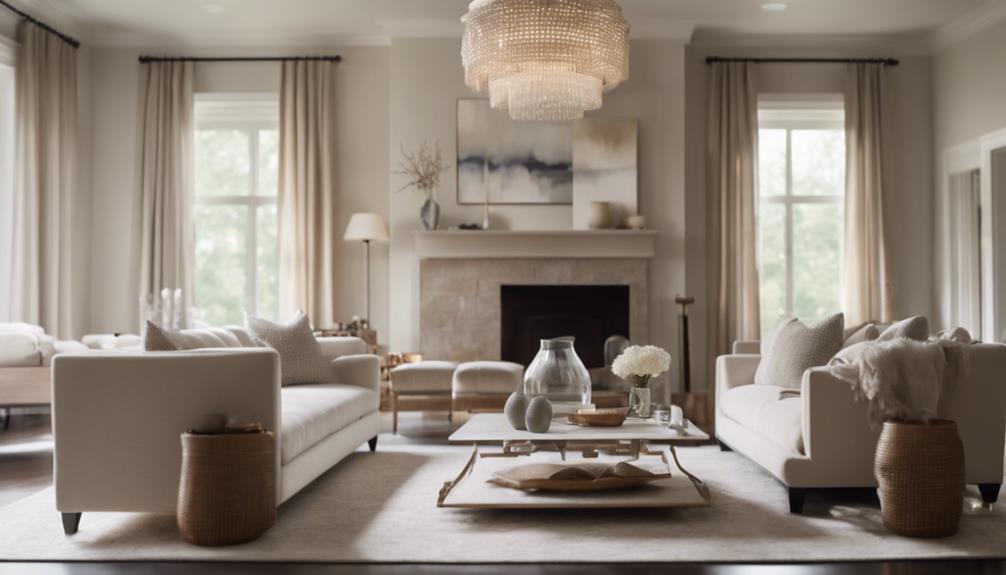
Transitional design combines the best of both worlds, blending traditional and contemporary styles to create a unique and flexible aesthetic in your home. This approach offers you the freedom to mix various furnishing choices without locking you into a specific era.
It encourages your creativity and personal expression, allowing you to curate a space that truly reflects you. You'll find a balance between minimalist and maximalist design, showcasing contrasting elements harmoniously.
Transitional design is all about achieving a curated balance, where each piece complements the others, creating a cohesive look. With this style, you can effortlessly highlight your personality while enjoying a timeless elegance that adapts to changing tastes and trends.
Implementing Transitional Design Principles
To bring the principles of transformative design to life, start by identifying a focal point that captures attention and sets the tone for your space. This could be an abstract art piece or a cherished heirloom. Contrast this focal item with elements from opposing styles, ensuring intentionality through common themes.
Use the table below to explore key aspects of implementing transitional design principles:
| Element | Implementation Tips |
|---|---|
| Focal Point | Choose a striking piece that resonates. |
| Contrast | Pair modern items with traditional decor. |
| Cohesion | Use a unified color scheme for balance. |
Designing Transitional Living Spaces
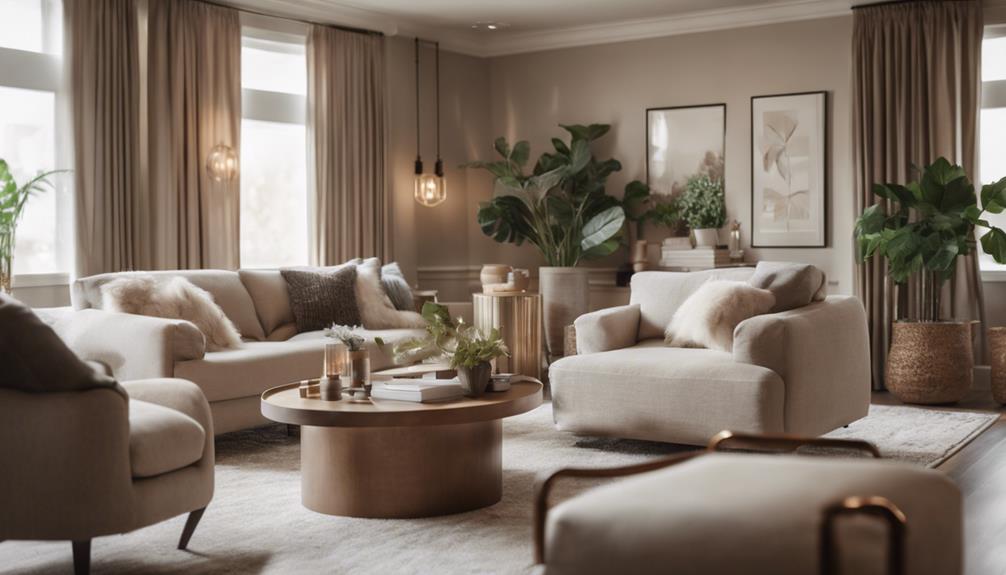
Creating a harmonious living space involves carefully selecting furniture and decor that blend various styles while prioritizing comfort and visual appeal.
Start with key furniture pieces, like a contemporary sofa or a curvy headboard, to set the tone.
Layer textures with accessories, such as pillows and throws, to add warmth and character.
Mix materials like wood, metal, and fabric to enhance visual interest.
Keep color schemes cohesive to unify old and new elements, ensuring everything feels intentional.
Don't shy away from contrasting styles; pairing sleek lines with ornate details can create a striking balance.
Ultimately, your goal is to design a welcoming atmosphere where comfort meets style, inviting you and your guests to relax and enjoy the space.
Transitional Dining Room Ideas
Blending formal and casual elements in your dining room can elevate the space into a stylish gathering place for family and friends.
Consider mixing a classic chandelier with a sleek, modern table to create a striking contrast. You can also play with mismatched chairs—pair a traditional design with contemporary pieces for visual intrigue.
Incorporating houseplants adds organic shapes and texture, making the room feel more inviting.
To maintain balance, make sure that no single style dominates the space; instead, curate elements that complement each other.
Use a cohesive color scheme throughout your decor to tie everything together, creating a harmonious atmosphere that reflects your personal taste while embracing the beauty of transitional design.
Flexibility With Furniture Choices
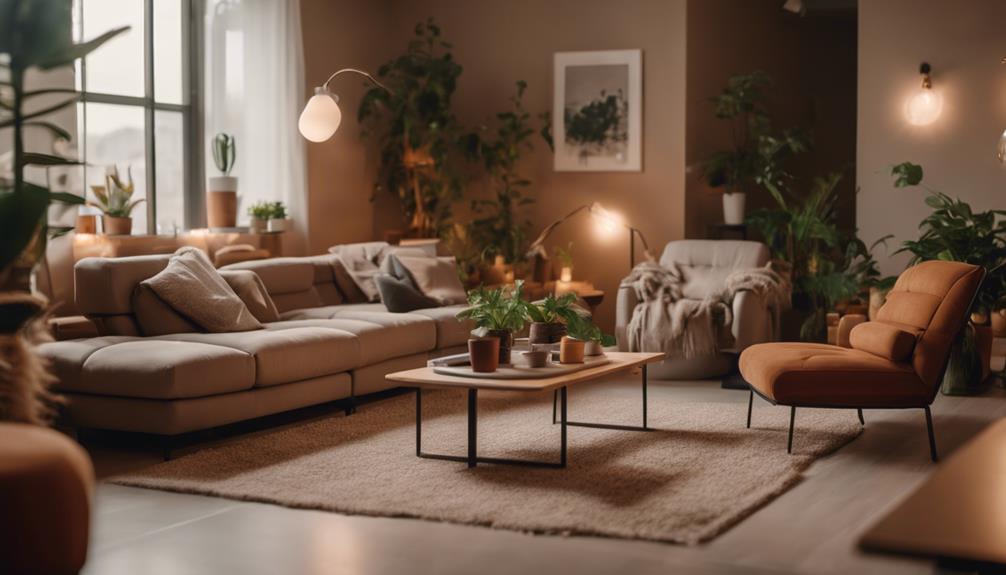
Mixing styles in your dining room sets the perfect stage for exploring flexibility with furniture choices, allowing you to experiment until you find what truly resonates with your taste. You can easily blend various designs without being tied down to one specific aesthetic. Consider trying out furniture rentals to test different looks without long-term commitments.
| Style | Example Furniture | Key Features |
|---|---|---|
| Modern | Sleek dining table | Clean lines, minimalism |
| Traditional | Ornate chairs | Classic designs, comfort |
| Eclectic | Mismatched elements | Unique character, personal touch |
This approach not only keeps your options open but also encourages you to discover your unique blend of styles. Enjoy the journey!
How Can Transitional Design Blend Bold Styles Successfully?
Mastering eclectic design techniques can help transitional design blend bold styles successfully. By incorporating elements from various styles, such as modern and traditional, and integrating them seamlessly, a cohesive and balanced look can be achieved. This approach allows for the creation of a unique and dynamic living space.
How can I incorporate elements of eclectic design into a transitional design?
To incorporate elements of eclectic design into a transitional design, consider mastering eclectic design blend styles by mixing various textures, patterns, and colors. Incorporate unique furniture pieces and accessories from different time periods to create an eclectic yet harmonious look. Balance the mix with clean lines and neutral tones for a transitional feel.
How Can Transitional Design Concepts be Used to Create Flexible and Innovative Work Spaces?
Transitional design concepts can seamlessly integrate flexibility and innovation in workspaces. By incorporating versatile furniture, modular layouts, and adaptable technology, businesses can create dynamic environments that support collaboration, creativity, and productivity. Embracing this approach can lead to more agile and responsive workspaces for the modern workforce.
Conclusion
As you commence your journey through transformative design, think of it as weaving a vibrant tapestry. Each thread represents a unique style, combining the warmth of tradition with the coolness of modernity.
Like a skilled artisan, you'll blend colors and textures, creating a stunning masterpiece that tells your story. Embrace the flexibility to mix and match, and let your space become a reflection of your personality, inviting all who enter to experience the harmony you've crafted.
